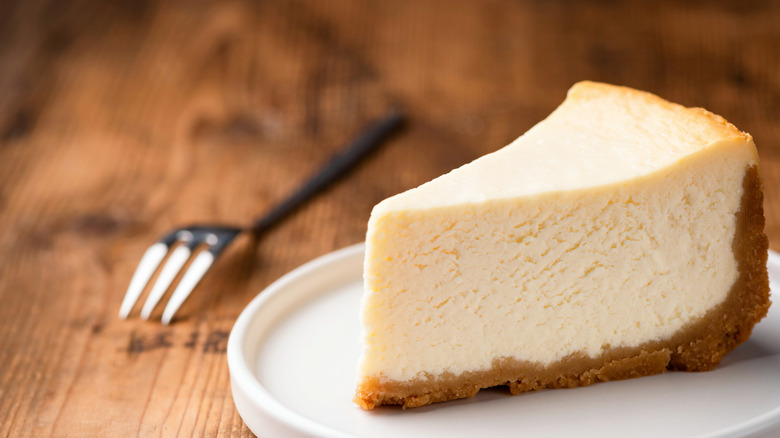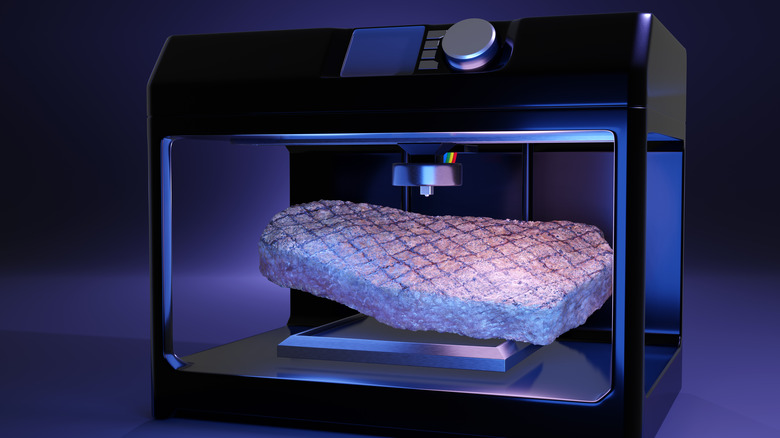You Can Now 3D-Print A Vegan Cheesecake
Since the advent of 3D printing scientists, innovators, and tech fans everywhere have applied the technology to anything and everything under the sun. The technology itself was first invented in 1981 but really became popularized (and more affordable) in the early 2000s. In the ensuing years, we've seen 3D-printed houses, cars, clothing, even animal prosthetics.
So it should come as no surprise then that fans of the technology have set their sights on food. Cheesecake, to be specific. As reported by CNN, researchers at Columbia University used a 3D printer to assemble and bake a seven-ingredient vegan cheesecake. (Somewhere in the television afterlife the "Golden Girls" matriarch Sophia Petrillo is shaking her fist, demanding that the nerds stay away from her beloved cheesecake.)
This does beg the question though, did anyone ask for a 3D-printed cheesecake? Does the world need a 3D-printed cheesecake? And, most importantly, does a 3D-printed cheesecake even taste good?
3D printing is coming for food
The idea of 3D printing food didn't start with this cheesecake, to be fair. There are companies that have tested a 3D-printed, plant-based steak and London's Food Ink claims to be the world's first 3D printing restaurant. The game changer here is that the researchers at Columbia not only printed the cheesecake, but they also baked it using lasers as it was printing.
If wrapping your head around printed, laser-baked food is a bit difficult, you might need to sit down, because tech and robots have been coming for our food for a little while now. Robots have quietly been taking over fast food operations and South Korean restaurant Robert Chicken has developed robots that successfully fry chicken.
Between this and ChatGPT, maybe Will Smith's character in the 2004 film "I, Robot" was onto something when he was famously distrustful of AI robots. In terms of this cheesecake though, it apparently took 30 minutes to print one slice, which doesn't seem commercially viable.
And as for taste? The lead researcher Johnathan Blutinger likened it to Willy Wonka's three-course dinner chewing gum, stating that each flavor in the cheesecake could be tasted independently. All fascinating in theory of course, but for now we'll stick to a classic slice of New York cheesecake baked in an oven, please.

